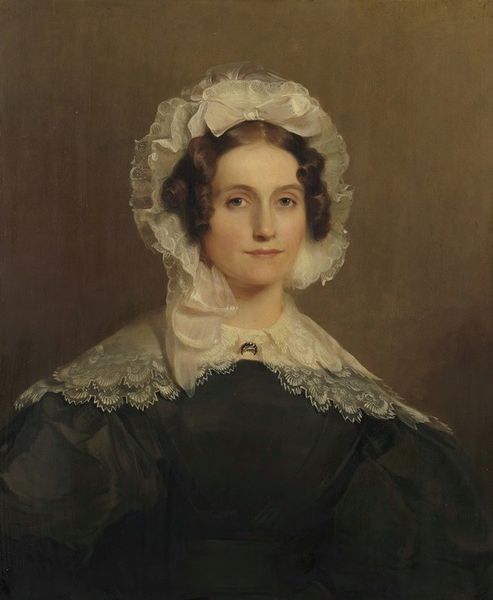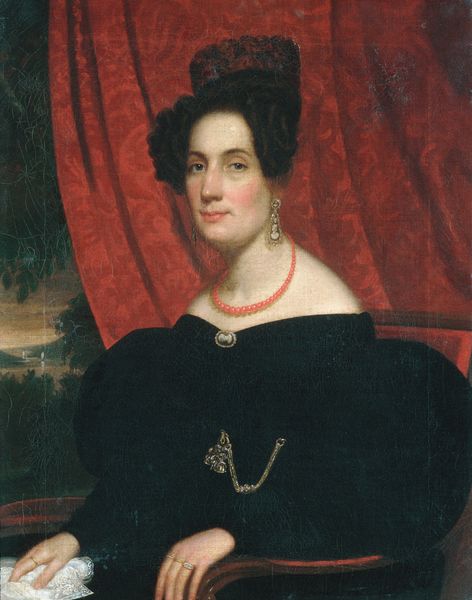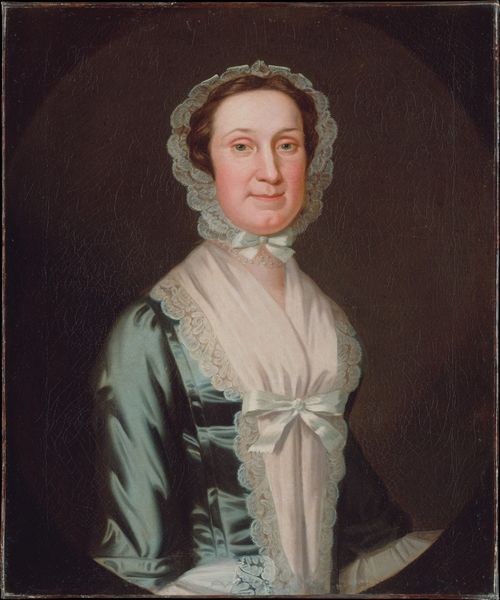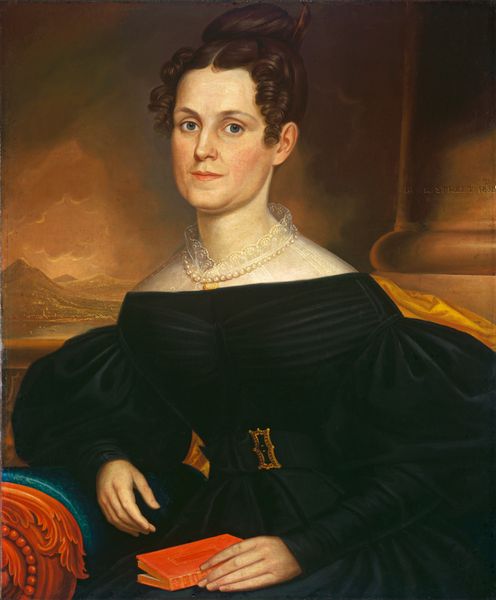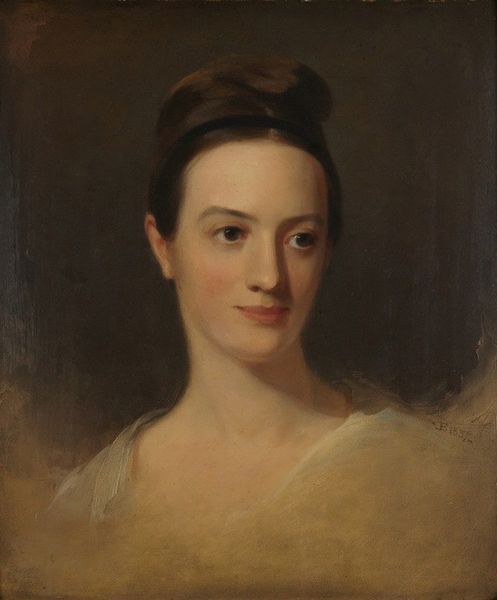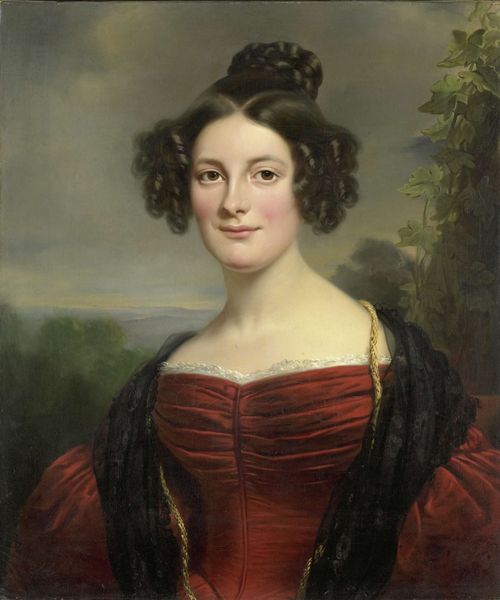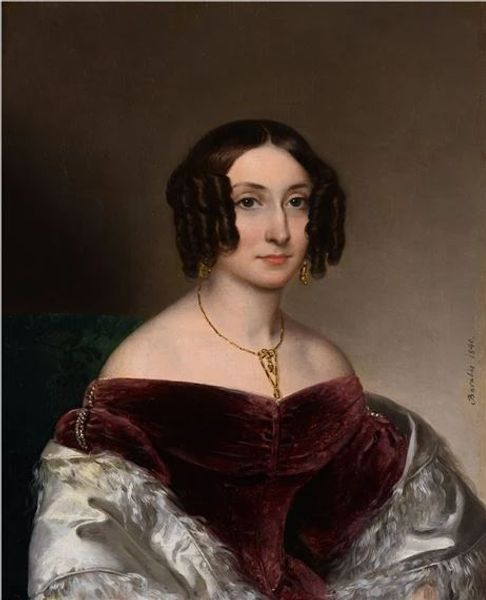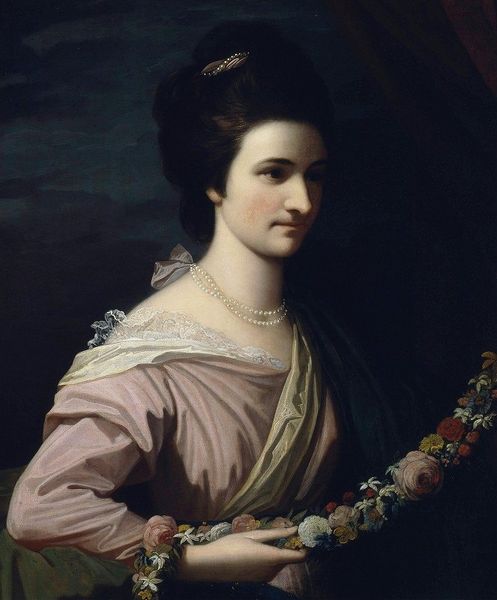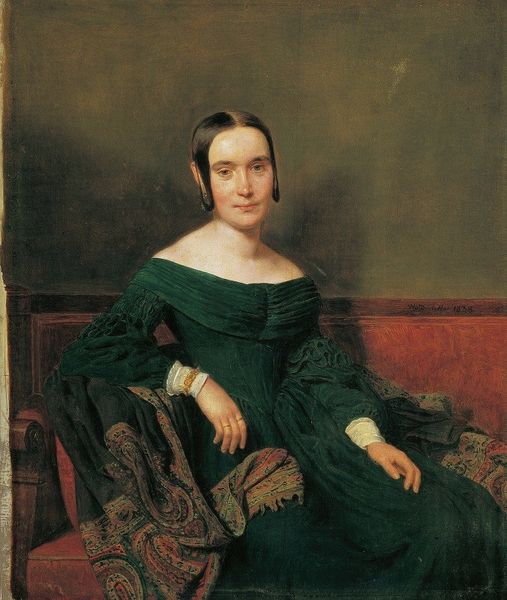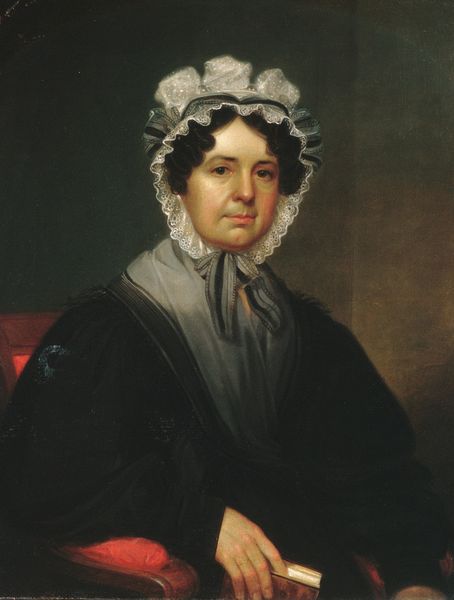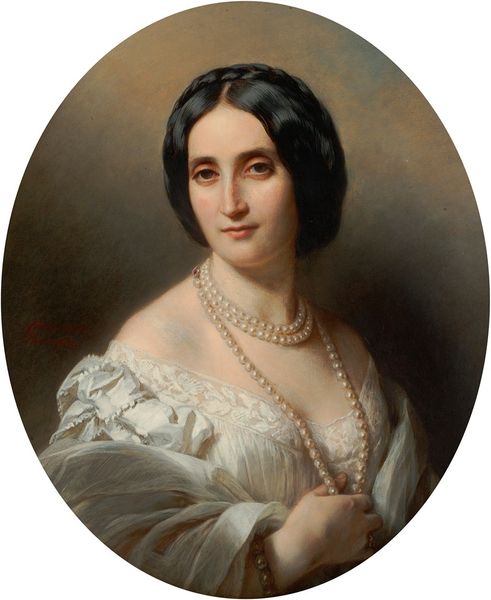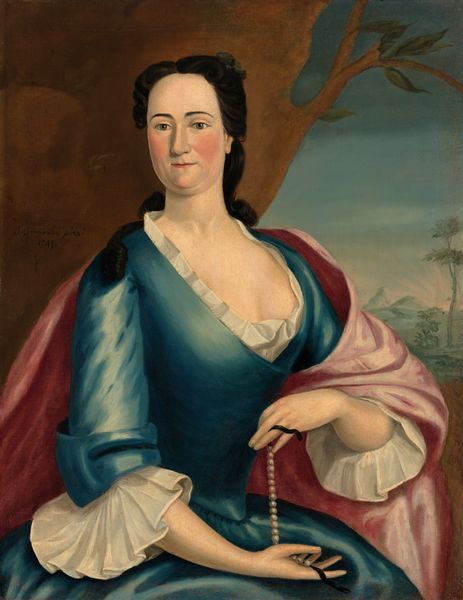
painting, oil-paint
#
portrait
#
painting
#
oil-paint
#
romanticism
Dimensions: 30 1/8 x 25 in. (76.8 x 63.5 cm)
Copyright: Public Domain
Curator: Looking at this oil-on-canvas portrait of Mrs. John Adams Conant by William Dunlap, painted in 1829, the first thing that strikes me is the sense of quietude. Editor: Yes, and I am immediately struck by the color palette—how it so effectively evokes a particular mood, and a time! Curator: Precisely. Dunlap was such an interesting figure, straddling the line between artist and historian, documenting early 19th-century American society through his portraits. Editor: It is interesting how, in representing Mrs. Conant, the artist captures not only her likeness, but a set of assumptions about feminine virtue—especially the demure posture, which becomes so pronounced in her downcast gaze. Do you feel a sense of constraint conveyed through the composition, as well? Curator: Oh, certainly. There’s a formality that speaks volumes about the societal expectations placed upon women of her status at that time. That voluminous black dress she wears, the simple lace at the collar… Even her hairstyle seems like a carefully constructed edifice. Editor: I wonder what the color signifies. It certainly could relate to mourning, considering that women’s wardrobes and hairstyles held much greater significance than men's, particularly given that hair and clothing could demarcate the liminal phases of mourning, reproduction, and marital status. Curator: True! And think about how painting someone's portrait allowed them to assert their position within society. It's a means of preserving legacy, and, for the artist, staking their place within the development of painting as a discipline in early America. Editor: And there's such a particular American-ness here. It is clearly related to romanticism, and yet diverges quite sharply from what was emerging in Europe at the same time, focusing instead on documenting a bourgeois sense of reality and the moral and intellectual standing it signified. Curator: Looking closely, there's such skill in rendering the textures – the sheen of her hair, the almost tangible quality of the lace... It makes the image really come to life! Editor: Absolutely. This image is much more than a mere portrait; it is a historical and social document. I feel very pensive reflecting on its complexities. Curator: Yes, me too. Dunlap’s work offers a compelling window into another time—a moment where we can feel both connected to and distanced from these sitters.
Comments
No comments
Be the first to comment and join the conversation on the ultimate creative platform.
